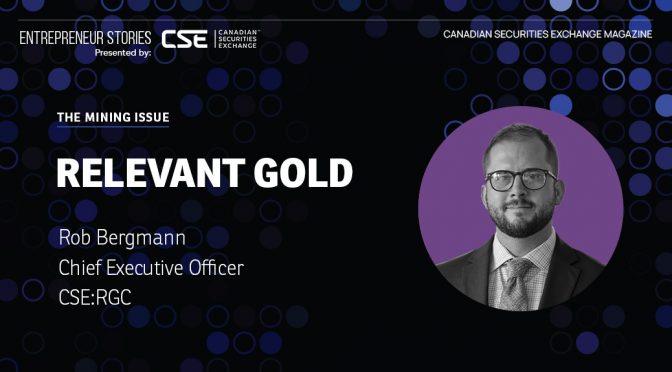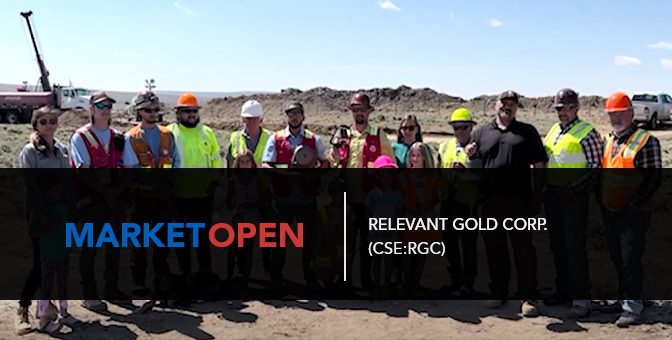Relevant Gold (CSE:RGC) is a new company on the CSE with a bold idea.
Built by serial entrepreneurs with a track record of success in the exploration space, Relevant is casting “new eyes on old rocks,” as Chief Executive Officer Rob Bergmann likes to say.
And it has come up with a big hypothesis: shear-hosted gold mineralization throughout Wyoming is connected to the prolific Abitibi shear zone belts in Ontario and Québec, making the state the potential site of a new gold rush. The Abitibi is one of the world’s premier gold districts, with over 230 million ounces of gold produced over the last 100 years and more being uncovered throughout the belt.
Relevant Gold’s interpretation of geological records comes straight from science. Dr. Kevin Chamberlain is a researcher at the University of Wyoming and one of several technical advisors to the company. He has also authored publications on the tectonic reconstruction of the region and helped propel the structural thesis to the forefront, connecting the structure to the actual Superior Province, a crustal block stretching from Ontario and Québec to northern Minnesota, during its critical development window.
Relevant Gold’s other technical advisors include Dr. Tom Campbell, who spent his entire career working in orogenic shear-hosted gold systems, both at the Homestake Mine as well as in the Abitibi, and Dr. Dean Peterson, who did his PhD research on the Abitibi, specifically looking at the gold produced in the Timmins, Kirkland Lake and Hemlo camps.
The technical team hypothesizes that the gold deposits of the Abitibi formed around 2.65 billion years ago across the Abitibi province, or craton, and the Wyoming province. The two cratons started to drift apart around 2.1 billion years ago to come to rest beneath what is now the Canadian provinces of Ontario and Québec. Half a billion years later, major tectonic drifting occurred that moved those geologic provinces and plates apart to where they sit now.
Essentially, if the Wyoming craton was attached to the Abitibi, then the gold and the deformation happened in both provinces. Relevant Gold’s team of experts believes that its own reconnaissance is beginning to prove the model through extensive exploration in the state.
Bergmann told Canadian Securities Exchange Magazine that the team was “standing on the shoulders of giants” in connecting the dots to form its theory, building upon existing literature published by leading educators.
“We’re pioneering this idea from an economic level in today’s environment,” Bergmann explains. “There have been multiple papers published on the theory of these connections, but the science itself hasn’t been around for that long. One of our key advantages is that it is a relatively young science. A lot of it came from modern technologies that allow scientists to age-date the rocks more accurately, connect those in time and do that full reconstruction.”
Wyoming is not exactly unknown in a mining context. In 2020, the state was rated as having the second-most friendly mining policies globally by the Fraser Institute, so projects face lower social and environmental risk. As the least populated state in the country, Wyoming was founded on resource development, and permitting is about as streamlined as it gets. But it is other resources – bentonite, coal, rare earths and uranium – that dominate the state’s mining matrix; gold, less so.
That said, Relevant Gold is one of a handful of companies zeroing in on Wyoming’s resources. Nasdaq-listed US Gold is looking to put its CK gold project into development, and other companies are starting to ramp up exploration activities.
Relevant Gold, however, is at the forefront of pioneering the Abitibi comparisons, which gives them a lot of room for exploration. In Relevant Gold’s case, that would mean searching for an orogenic-style gold deposit similar to the massive Timmins, Canadian Malartic or Hemlo operations in the Abitibi.
“When we set out to build the portfolio, we took a look at the criteria needed for an Abitibi-like system, and we narrowed in on district-scale opportunities,” Bergmann says. “Each one of our five properties that we’ve assembled is large enough to host a deposit of that scale, as well as the potential development footprint.”
Relevant assembled five district-scale assets totalling over 40,000 acres of ground, including the current flagships, Golden Buffalo and Lewiston. While both projects are at the earliest stages of development, Bergmann and the team see “a lot of catalysts” in the near and longer terms.
“As a geologist at heart, it is exciting because this stuff has never been drilled, and the thesis is very new,” says Bergmann. “For example, we just completed our inaugural drill program at one of our projects, the Golden Buffalo project. We are the first ones to ever see those rocks at the subsurface, which is pretty exciting.”
Golden Buffalo has “an abundance” of high-grade visible gold at surface, according to Bergmann. The focus of the inaugural drill program is to define the geology and the structural architecture in the subsurface. As Bergmann explains, in the Abitibi, it can take on average around 70 to 100 drill holes before making a discovery. Usually, companies going into a drill program already have an abundance of knowledge of the subsurface. That’s where Relevant differs.
“We went in and didn’t have any of that knowledge, but we were still able to complete 26 holes and about 3,500 metres in the inaugural program,” says Bergmann. “Ultimately, our main goal is to define the subsurface geology and the architecture and understand if this is truly a big orogenic system, meaning do these shear zones extend at depth into the subsurface and along strike? Is there fluid evolution related to that?”
From there, Relevant will start vectoring toward a gold deposit opportunity of scale. “We know that we’ve got a lot of gold at surface and that the system’s enriched, but we really need to confirm that the system is there at a scalable size,” Bergmann explains. “That would really help position us to continue to go at Golden Buffalo and also help guide our drilling on Lewiston and our other high-value targets.”
All told, Relevant Gold has assembled a very knowledgeable board with a management group and technical team that can carry out its plans efficiently and cost-effectively, a fact Bergmann stresses is important in today’s market.
“Investors are looking at the markets a little bit differently, and rightfully so,” Bergmann says. “I’d like to think that at Relevant Gold, we are one of these juniors that is very well positioned in these current markets, which not a lot of folks can say. We’re a very clean company with a clean share structure and a long runway of opportunities and targets. We’ve been able to sustain some value in the marketplace, and with strong support and shareholders that are with us for the long term, we really believe in the team and our ability to create value.”
This story was featured in Canadian Securities Exchange Magazine.
Learn more about Relevant Gold at relevantgoldcorp.com.


